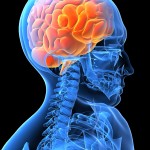 Dopamine is a neurotransmitter that plays a number of important functions in the brain. It is very important in the reward system whereby we feel pleasure, achieve heightened arousal and do much of our learning.
Dopamine is a neurotransmitter that plays a number of important functions in the brain. It is very important in the reward system whereby we feel pleasure, achieve heightened arousal and do much of our learning.
Every type of reward that has been studied increases the level of dopamine transmission in the brain. A wide variety of highly addictive drugs, including cocaine and amphetamines (i.e., methamphetamine, “speed”, Adderall, Vyvanse, Dexedrine) act directly on the dopamine system. Dopamine also helps with focus, concentration and memory as well as motivation. Several important diseases are associated with dysfunctions in the dopamine system, including Parkinson’s disease, schizophrenia, restless leg syndrome, ADD/ADHD and addiction.
Imbalances with dopamine often direct a person to increased indulgence in behaviors or substances that temporarily increase dopamine levels as a person (often subconsciously) attempts to feel better. This helps explain why people often turn to these substances and behaviors (including gambling, risk-taking, sex and drugs–especially alcohol, cocaine, morphine, nicotine, amphetamines (including many weight-loss medications)–and foods (especially sugar and sweets) in response to stress and/or uncomfortable emotional states.
Indulging in these behaviors, however, begins a futile cycle, creating stronger and stronger urges to engage in detrimental activities and/or substances in an attempt to release more dopamine in an artificial attempt to feel better.
This often leads to addiction.
Part 3 of this series will discuss how dopamine imbalances lead to food addiction in many people.
